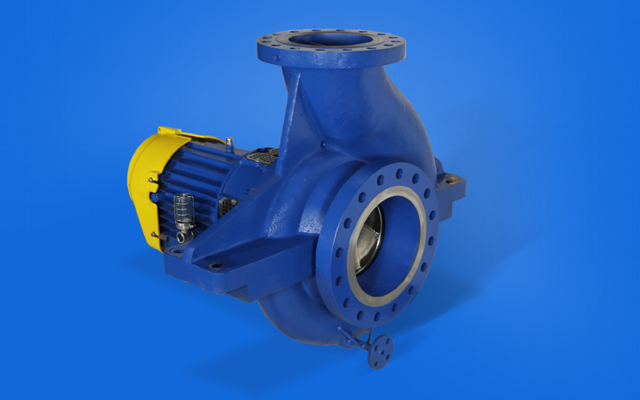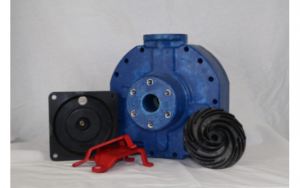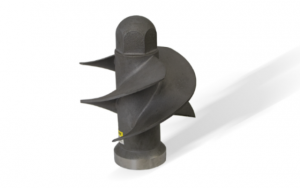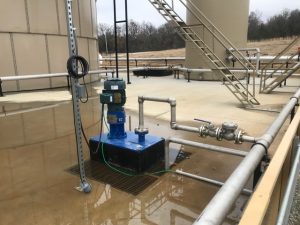Contributor: Carver Pump
When you have two process pump styles to choose from, how do you know which pump to select for your application? ANSI or API?
Many details need to be considered during the selection process, but it would be helpful to first understand the differences between ANSI and API pumps. Each of these pumps is designed according to different standards. ANSI pumps meet standards set forth by the American National Standards Institute, while API pumps are engineered to standards defined by the American Petroleum Institute.
As you may have guessed, the API 610 Standard focuses more specifically on refinery and oil & gas applications, whereas the ANSI B73.1 standard applies to a wider range of industries. The ANSI B73.1 Standard allows for interchangeability across 27 centrifugal pump sizes1, making this kind of pump ideal for many applications, including food processing, textiles, chemical, pulp & paper, and other types of process plants.
While ANSI pumps can handle a range of different fluids, they do not move thick and highly viscous materials well – unlike API pumps. API pumps are heavier duty and tend to operate more reliably under higher pressures, higher temperatures, and with the capacity to control emissions per EPA requirements. Typically more expensive than ANSI Pumps, API pumps have some major differences when it comes to the casing design, bearing housings, impellers, mounting, and back cover arrangements. Much of this is covered in Heinz P. Bloch’s book “Pump User’s Handbook Life Extension”, co-authored with Allan R. Budris, but below is a brief recap of some of these major differences.
- Casing Design Ratings for Pressure and Temperature – an ANSI pump is rated for 300 psig at 300℉, while an API pump is rated for 600 psig at 600℉.
- Impellers – manufactured without wear rings, ANSI pump impellers are open or semi-open; whereas API pumps feature closed impellers with replaceable casing wear rings.
- Bearing housings – the bearing housings of API pumps tend to be more robust steel design and often accommodate cooling jackets with greater capacity to handle higher temperatures than ANSI pumps.
- Mounting – ANSI pumps are generally foot-mounted, which makes it hard to keep aligned at elevated and varying temperatures as thermal stresses can significantly decrease operational life. API pumps are centerline mounted to counter the effects of thermal expansion and minimize the amount of stress to the casing. *Note: there are some ANSI pumps that are manufactured with centerline mounting.
- Back Cover Arrangements – as pump expert Ross Mackay explains in slide 3 of his slideshare presentation2, the back covers in each type of pump are secured differently. In ANSI pumps, the back cover and gasket are held against the pump casing by a cast iron bearing frame adaptor; while in API pumps, the back cover is bolted directly to the casing and uses a compression gasket with metal-to-metal fits.
When choosing a pump, the most important factor to consider is safety. In many cases, an API pump is chosen even when an ANSI style can ‘do the job’. Decisions on which type of pump to use must take into account not only the specific operating conditions and properties of the fluid being handled, but the safety and well-being of plant personnel and the surrounding environment.
Check out the API MAXUM OH2 – API 610 Compliant End-Suction Pump from Carver Pump
References:
Bloch, Heinz P. and Allan Budris; “Pump User’s Handbook: Life Extension,” 4th Edition, (2014), Fairmont Publishing, Lilburn, GA, ISBN 0-88173-720-8
1 – [blog] ANSI vs API Pumps: What’s the Difference; C&B Equipment; June 2018; https://cbeuptime.com/ansi-vs-api-pumps-whats-the-difference/
2 – [slideshare presentation] ANSI vs API? Author: Ross Mackay; 2004; https://www.slideshare.net/reedst/api-vs-ansi-pump
About Carver Pump
Since we built our first pumps in 1938, Carver Pump has become recognized as one of the leading centrifugal pump companies, building pumps to the most demanding engineering specifications and military standards in the world. We were one of the first American pump companies to attain ISO 9001 certification – the most recognized standard for quality in the world. This certification is your assurance that our commitment to quality includes not only our hardware, but also superior customer service, leading-edge R&D, and continuous improvement in everything we do. So whether the job is refueling fighter jets on the deck of an aircraft carrier, supplying paint to an auto assembly line, or bringing water to the fountain in a city park, we put our reputation on the line everyday with every pump we build. Learn more at www.carverpump.com.




